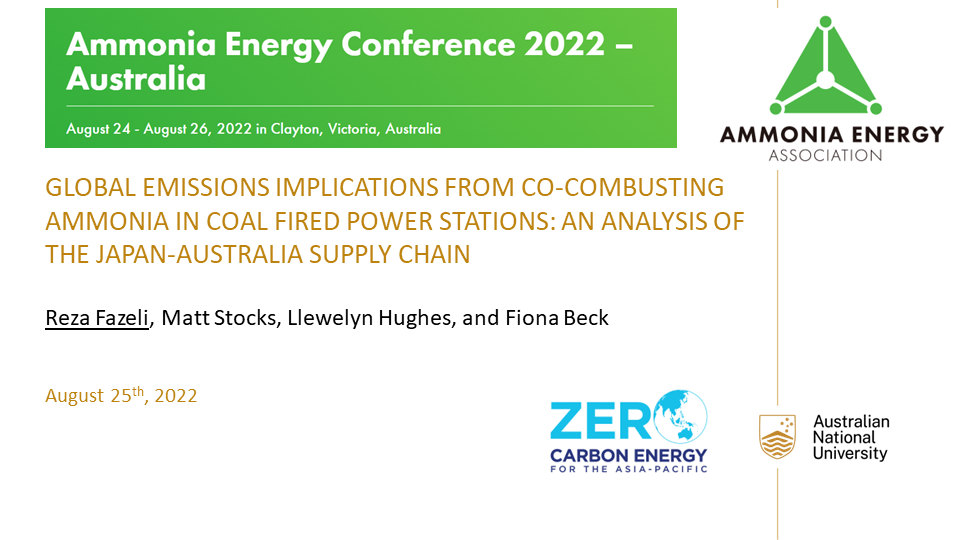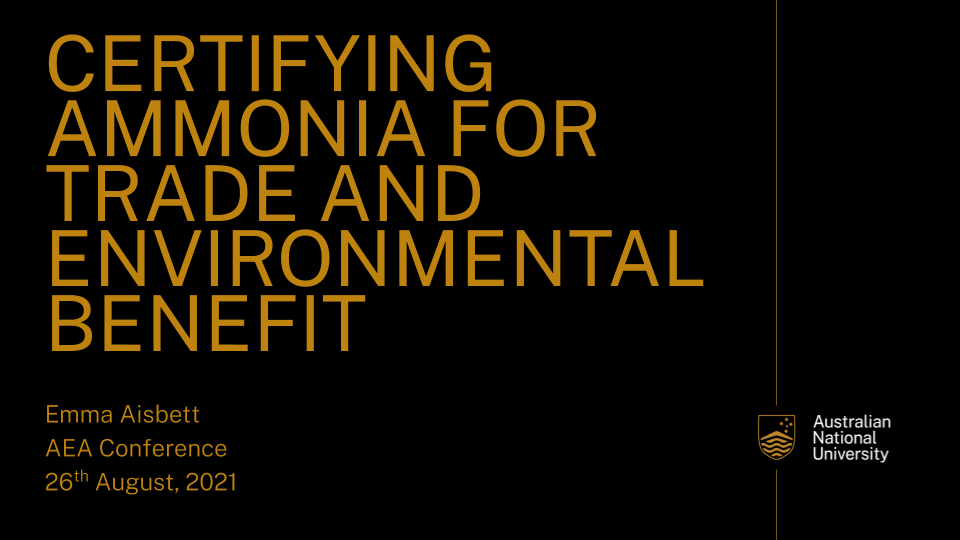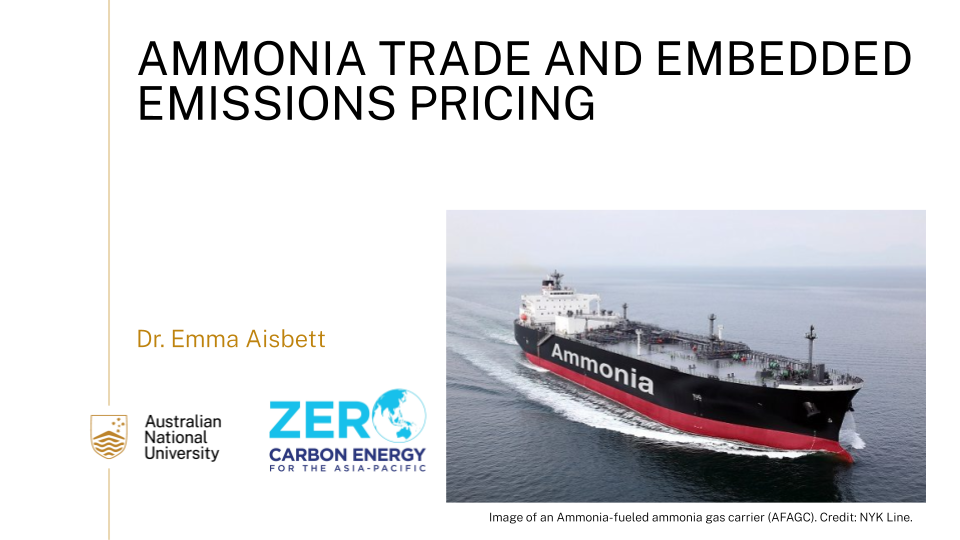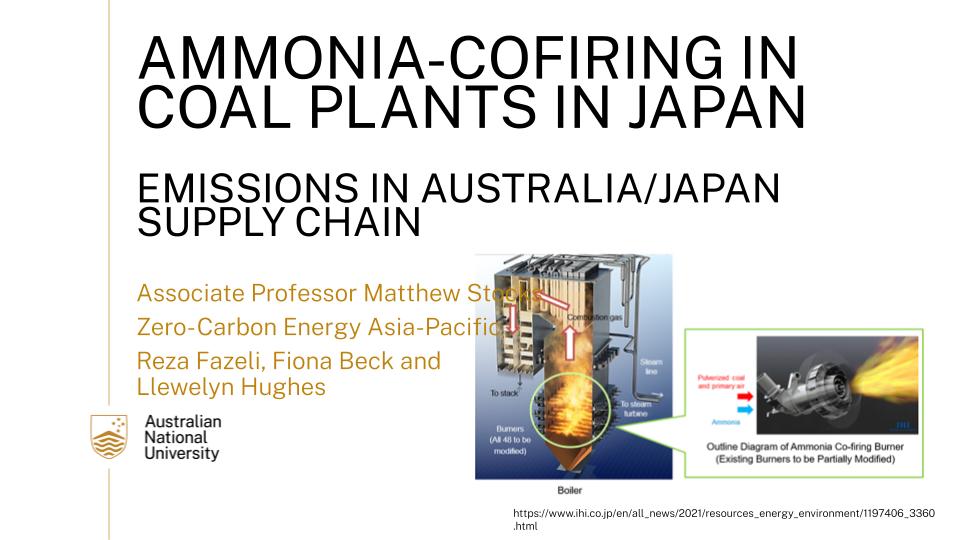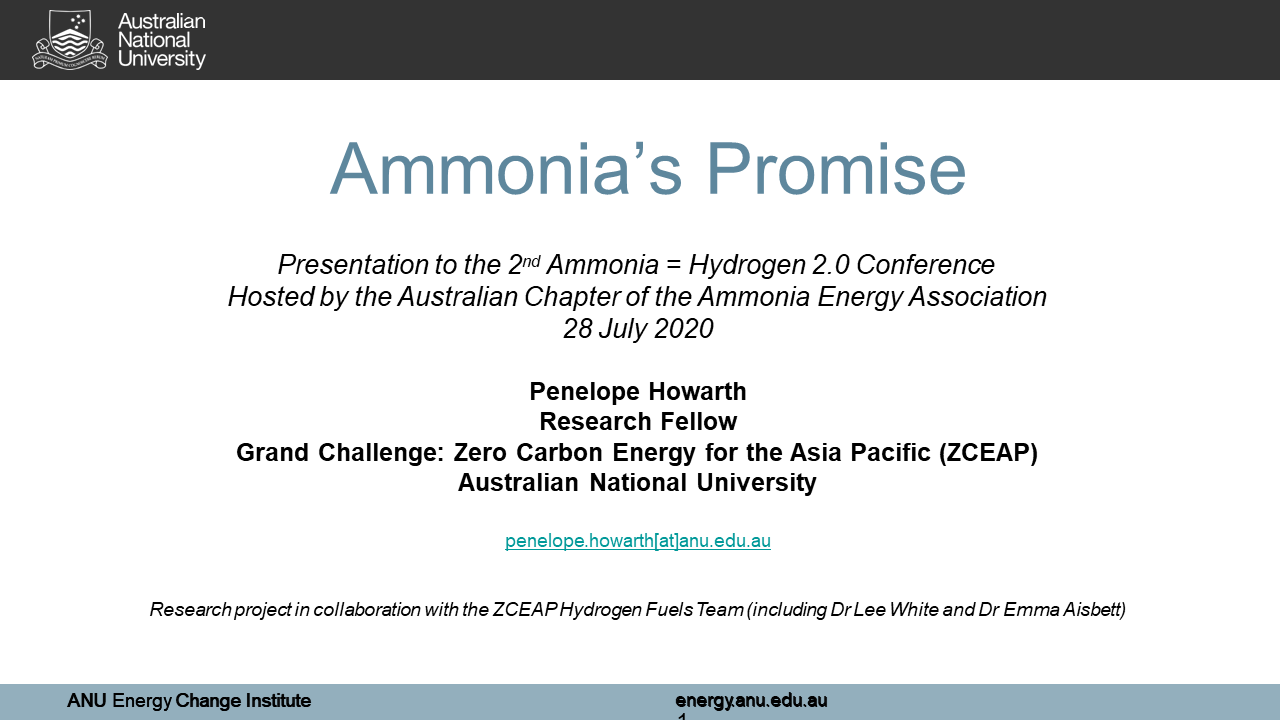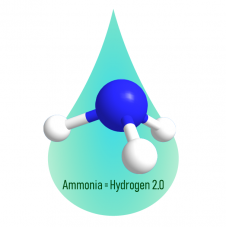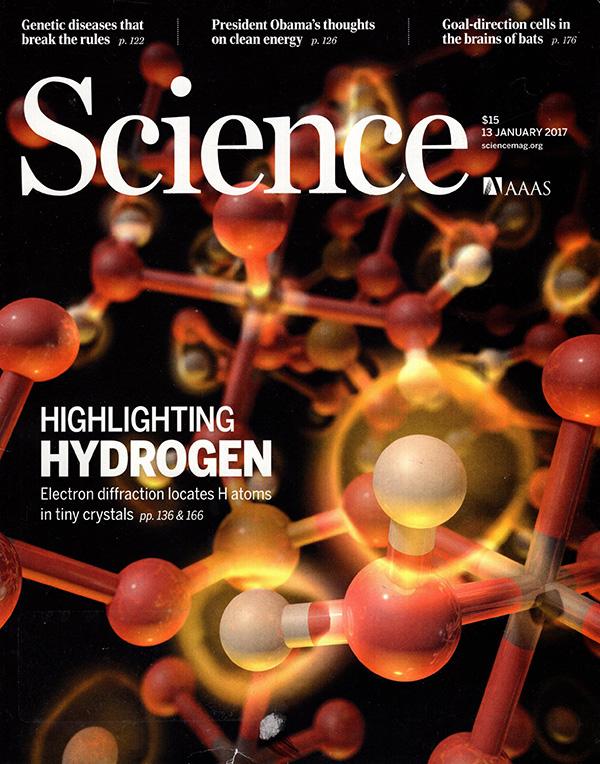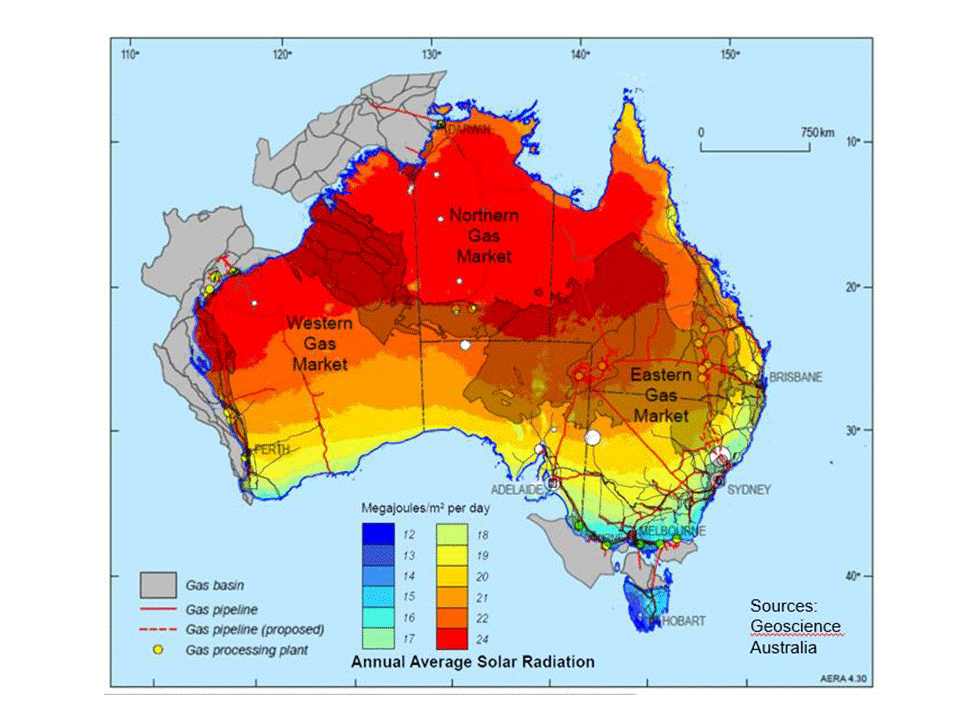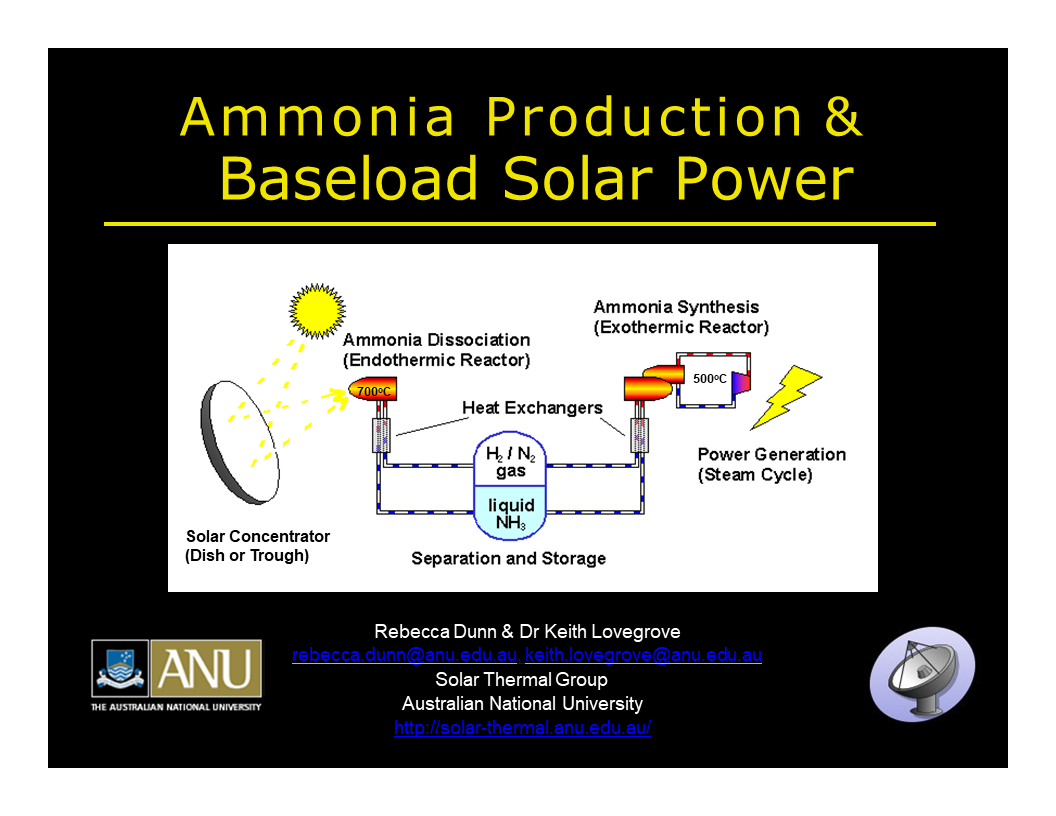Content Related to Australian National University
Presentation
Global emissions implications from co-combusting ammonia in coal fired power stations: An analysis of the Japan-Australia supply chain
This study considers the emissions implications of co-combusting imported ammonia in coal-fired power stations. The study adopts a supply chain approach, estimating the emissions reduction potential of 20% ammonia co-combustion in coal-fired power stations in the country of use (Japan), and the emissions associated with ammonia production in the country of origin (Australia). The results show co-combustion of ammonia produced with SMR-HB provides no net benefit for the combined country emissions, as ammonia production related greenhouse emissions in Australia are equivalent to the emission reductions in Japan. In contrast, co-firing ammonia produced from fully renewable sources reduces emissions in the…
Article
Producing cheap, clean hydrogen: new updates
Julian Atchison December 08, 2021
Three new updates this week:
1. A team at Durham University has shown that a massive scale-up of PEM electrolyser manufacturing capability can slash the capital costs of producing electrolyser units by up to 70%.
2. A team from the University of Campinas has proposed more focus on electrolysis of waste and seawater to produce hydrogen, avoiding direct competition between drinking water and hydrogen production.
3. A team from the Australian National University has demonstrated a new pathway forward for hydrogen production directly from sunlight by demonstrating a stable, efficient photocatalyst.
Presentation
Ammonia trade and embedded emissions pricing
Emissions (carbon) pricing has been theoretically and empirically proven to be the most efficient means of correcting the market failure caused by greenhouse emissions externalities. None-the-less, political constraints have prevented emissions pricing from forming a stable component of Australian climate and energy policy. For export-facing industries such as ammonia, however, emissions pricing in export markets is likely to matter more than Australian policy. In particular, the European Commission is set to propose a carbon-border adjustment mechanism in July 2021. The US is also considering ways of ensuring their industries are not disadvantaged as a result of its substantially ramped up…
Article
AEA Australia Announces 2020 Conference
Stephen H. Crolius August 06, 2020
Pandemic or no pandemic, the Australian chapter of the Ammonia Energy Association (AEA Australia) will hold a second edition of its Ammonia = Hydrogen 2.0 Conference this year. The event will be held on a virtual basis on August 27 and 28 from 1:00 to 5:00 p.m. (Australian Eastern Standard Time) each day. The conference tagline is “Building an energy export industry using Green Ammonia.” Its themes this year will be “green ammonia production — jobs for the regions;” “ammonia as maritime bunker fuel;” and “ammonia certification schemes.” The opening address, entitled “Ammonia — is it a fuel, or is it an energy carrier?” will be given by Alan Finkel, Chief Scientist of the Australian Government.
Article
International R&D on sustainable ammonia synthesis technologies
Trevor Brown February 03, 2017
Over the last few weeks, I've written extensively about sustainable ammonia synthesis projects funded by the US Department of Energy (DOE). While these projects are important, the US has no monopoly on technology development. Indeed, given the current uncertainty regarding energy policy under the Trump administration, the US may be at risk of stepping away from its assumed role as an industry leader in this area. This article introduces seven international projects, representing research coming out of eight countries spread across four continents. These projects span the breadth of next-generation ammonia synthesis research, from nanotechnology and electrocatalysis to plasmas and ionic liquids.
Article
Australia's Concentrated Solar Fuels Program
Stephen H. Crolius October 13, 2016
Solar ammonia' could be the key to the sustainable energy economies of two nations. During his talk at the 2016 NH3 Fuel Conference, Keith Lovegrove, Head of Solar Thermal at IT Power Group in Australia, said that Japan and Australia have the opportunity to move their trade in energy onto a climate-friendly foundation. This would involve development of Australia's solar resources in a way that helps Japan ramp up its Strategy for Hydrogen & Fuel Cells in the coming decades.
Presentation
Ammonia Production and Baseload Solar Power
Ammonia Production and Baseload Solar Power Rebecca Dunn and Keith Lovegrove, Australian National University
